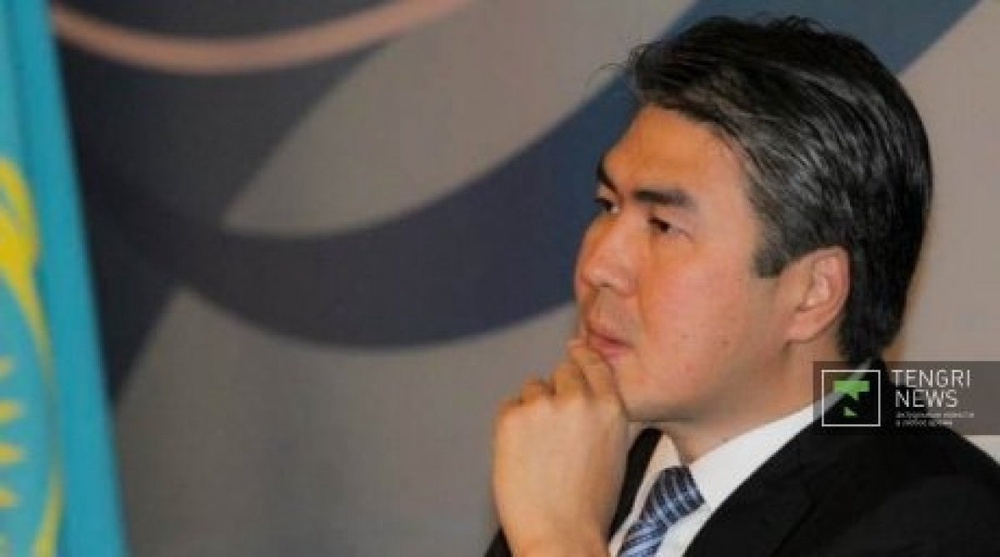
Kazakhstan has proven reserves of copper and polymetals for another 10-15 years, Tengrinews.kz reports citing Kazakhstan Minister of Industry and New Technologies Asset Issekeshev as saying at the government meeting. “Our situation is worst with copper and polymetals: the proven reserves of non-ferrous metals will support the industry for another 10-15 years only,” Minister said. According to Issekeshev, the fields discovered by Soviet geologists have been developed very intensely in the last decades, while geological exploration has not yet covered all the promising areas. “We are facing inability to replenish the depleted reserves and the tendency is growing. We are experiencing general decrease in of volume and deterioration of quality of the mineral reserves,” he stated. According to the Minister, depletion of reserves of many priority types of minerals greatly exceeds the speed of their incremental growth after exploration. Reserves increment in case of some metals (iron, manganese, gold, zinc) is being received mainly through re-evaluation and additional exploration of the already discovered fields, while the existing registered reserves of recently discovered copper and gold fields have low quality and cannot be considered equivalent to the depleted reserves. Issekeshev gave the statistics of the decrease of the proven reserves of main metals. Since the year 2000 copper reserves went down by 2.4 million tons (5.8 percent); zinc and lead reserved decreased by 7.2 million tons (19.8 percent) and 1.1 million tons (6.5 percent) correspondingly; bauxite reserves went down by 54.5 million tons (15 percent). “These numbers are given inclusive of the increment after geological exploration works. Thus, it is evident that it is necessary to take urgent measures for replenishment of the depleted reserves to avoid critical exhaustion of the mineral base that is the material basis for development of our economy in general,” he stated. Meanwhile, the proven reserves of many types of minerals that constitute the mineral base of Kazakhstan also constitute significant amounts in the global scale. Kazakhstan has 18 percent of the global reserves of uranium, 10 percent of chrome reserves, 9 percent of world’s lead, 8 percent of zinc, 5 percent of silver, 5 percent of manganese and 5 percent of world’s copper reserves. “But Kazakhstan is lagging behind the major global producers by the quality of its ores. A large part of the reserves has a low quality. As a result only 35 percent of proven reserves are exploited today and the fields of 10 types of minerals (diamonds, stannum, tungsten, tantalum, niobium, nickel, boron, magnesite, magnesium and potassium salts) have not been developed yet. I have to say that over 80 percent of proven reserves have been transferred to the subsoil users and up to 90-98 percent of hydrocarbons, gold, copper, polymetals, chrome, manganese and nickel are explored by the subsoil users. The backup is made of the fields with small reserves or complicated ores (e.g. brown iron ores of Ayat field),” Issekeshev said.





Kazakhstan has proven reserves of copper and polymetals for another 10-15 years,
Tengrinews.kz reports citing Kazakhstan Minister of Industry and New Technologies Asset Issekeshev as saying at the government meeting.
“Our situation is worst with copper and polymetals: the proven reserves of non-ferrous metals will support the industry for another 10-15 years only,” Minister said.
According to Issekeshev, the fields discovered by Soviet geologists have been developed very intensely in the last decades, while geological exploration has not yet covered all the promising areas. “We are facing inability to replenish the depleted reserves and the tendency is growing. We are experiencing general decrease in of volume and deterioration of quality of the mineral reserves,” he stated.
According to the Minister, depletion of reserves of many priority types of minerals greatly exceeds the speed of their incremental growth after exploration. Reserves increment in case of some metals (iron, manganese, gold, zinc) is being received mainly through re-evaluation and additional exploration of the already discovered fields, while the existing registered reserves of recently discovered copper and gold fields have low quality and cannot be considered equivalent to the depleted reserves.
Issekeshev gave the statistics of the decrease of the proven reserves of main metals. Since the year 2000 copper reserves went down by 2.4 million tons (5.8 percent); zinc and lead reserved decreased by 7.2 million tons (19.8 percent) and 1.1 million tons (6.5 percent) correspondingly; bauxite reserves went down by 54.5 million tons (15 percent).
“These numbers are given inclusive of the increment after geological exploration works. Thus, it is evident that it is necessary to take urgent measures for replenishment of the depleted reserves to avoid critical exhaustion of the mineral base that is the material basis for development of our economy in general,” he stated.
Meanwhile, the proven reserves of many types of minerals that constitute the mineral base of Kazakhstan also constitute significant amounts in the global scale. Kazakhstan has 18 percent of the global reserves of uranium, 10 percent of chrome reserves, 9 percent of world’s lead, 8 percent of zinc, 5 percent of silver, 5 percent of manganese and 5 percent of world’s copper reserves.
“But Kazakhstan is lagging behind the major global producers by the quality of its ores. A large part of the reserves has a low quality. As a result only 35 percent of proven reserves are exploited today and the fields of 10 types of minerals (diamonds, stannum, tungsten, tantalum, niobium, nickel, boron, magnesite, magnesium and potassium salts) have not been developed yet. I have to say that over 80 percent of proven reserves have been transferred to the subsoil users and up to 90-98 percent of hydrocarbons, gold, copper, polymetals, chrome, manganese and nickel are explored by the subsoil users. The backup is made of the fields with small reserves or complicated ores (e.g. brown iron ores of Ayat field),” Issekeshev said.
Continuation


 +7 (777) 001 44 99
+7 (777) 001 44 99















































